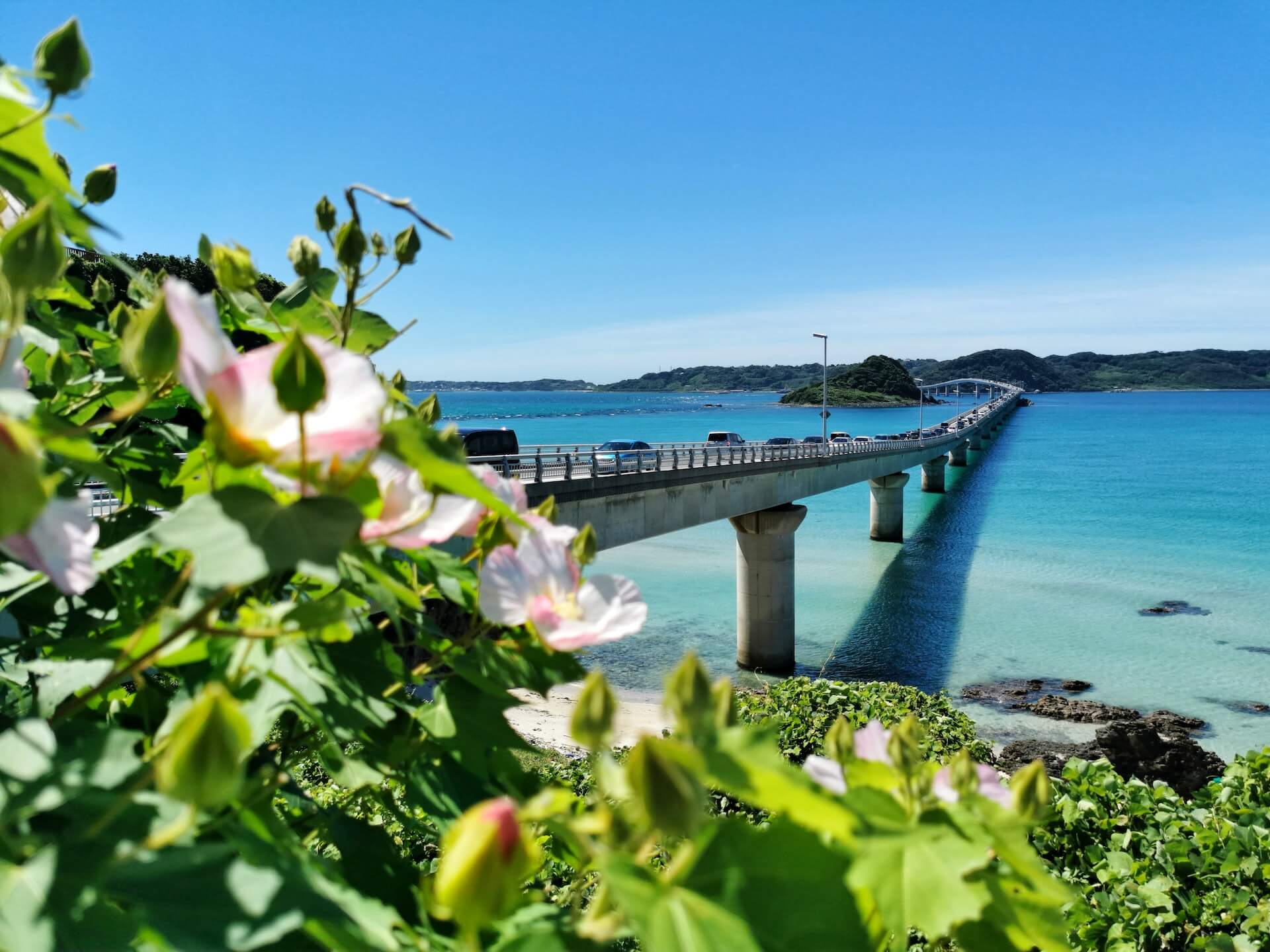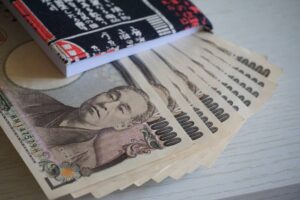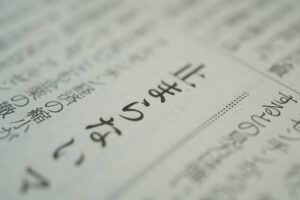Okinawa is one of the most popular tourist destinations in Japan, attracting sun-seekers from all over the world. It also happens to be one of the most affordable places to live in Japan.
Given that sweet combination of atmosphere and affordability, you may find yourself wondering how much it costs to live in such a beautiful part of the country.
This article will break down the cost of living in Okinawa according to seven major indicators: Food, housing, transportation, energy, clothing, healthcare, and childcare. Consider it a comprehensive guide on what to expect in terms of expenses when living in the tropical paradise.
Cost of Food in Okinawa
One of the biggest expenses for anyone living in any area is food, and Okinawa is no different.

Photo by Maria Lin Kim
The cost of food in Okinawa varies greatly, depending on where you purchase it. For example, purchasing food at a local grocery store will typically be less expensive than buying it at a high-end restaurant.
On average, a meal at a cheap restaurant will cost between ¥800 and ¥1,200, while a meal at a mid-range restaurant will cost between ¥1,500 and ¥2,500.
Grocery store costs across Japan are fairly similar, and you can find more info on that in a previous article on monthly cost of living. Here’s a brief list of a few items listed there:
- ¥200 per liter of milk
- ¥300 per head of broccoli
- ¥58 per 100 grams of chicken breast
Cost of Housing in Okinawa
The cost of housing in Okinawa is one of the most important factors to consider when moving there. As with anywhere, location, size, and age of the property can change the price. Here’s the monthly average rent in Naha for different sized rooms:
- ¥47,700 for a bedroom with a kitchen
- ¥54,200 for a bedroom with a dining room-kitchen combo
- ¥73,700 for a bedroom with a dining room-kitchen combo and living room
- ¥99,900 for two bedrooms with a dining room-kitchen combo and living room

Photo by Roméo A.
Bear in mind that Naha City is one of, if not the most, expensive areas in Okinawa. Nishihara, on the same island but to the east, is one of the cheapest. If you’re looking for English resources on Okinawan apartment prices, they’re surprisingly widely available online.
It’s also possible to buy a house in Okinawa, but this varies depending on availability and what your tastes are.
Cost of Transportation in Okinawa
The cost of transportation in Okinawa is relatively affordable compared to other cities in Japan. The average cost of a one-way bus ticket is around ¥200. Taxis are also available, but they can be more expensive, with fares starting at around ¥700.
If you plan to drive, you can expect to pay around ¥18,000 per month for a small car. This includes costs for the following:
- Modest gas fees
- Yearly insurance payments
- Yearly car registration payment
It doesn’t include insurance inspection (shaken) costs as these vary depending on the car. Older cars with bigger engines tend to cost more.
Energy Costs in Okinawa

Energy costs in Okinawa are relatively low compared to other cities in Japan thanks to that balmy climate. The average monthly electricity bill is around ¥4,000 to ¥5,000, while the average monthly gas bill is around ¥2,000 to ¥3,000.
Much of that electricity bill comes from running the air conditioner, while the gas bill tends to go up based on how often you cook and run hot water.
Cost of Clothing in Okinawa
The cost of clothing in Okinawa is similar to that of other cities in Japan. You can expect to pay something like the following for different types of clothing:
- ¥400 for a pair of socks
- ¥3-10,000 for jeans, depending on taste
- ¥2-3,000 for shorts
- ¥1,500 and up for shirts
If you’re on a budget, stores like Uniqlo are your friend. There are also many other affordable clothing stores throughout Japan and even thrift shops selling lightly used clothes for pennies.
Of course, if you want to drop some cash, there’s no shortage of upscale shopping in the country, either.
Cost of Healthcare in Okinawa

Healthcare costs in Japan are highly variable based on what type of insurance you have. As with any other country, the type of hospital visit also matters.
If you’re enrolled in an employee co-pay scheme for healthcare, 9.15% of your salary goes toward insurance payments each month. After that, hospital bills may look something like this:
- ¥1-2,000 for a general check-up with a doctor
- ¥4,000 for x-rays and MRIs
- ¥500 and up for medicine
- ¥2,000 for a dental visit
Cost of Childcare in Okinawa
The cost of childcare in Okinawa is similar to that of other cities in Japan. On average, a daycare center for a child under the age of two will cost around ¥20,000 to ¥25,000 per month.
Bear in mind that the cost of daycare can change a lot depending on factors like number of kids in the family, income, and type of daycare. Certain local governments also heavily subsidize childcare, making it even more affordable.
Is It Expensive to Live in Okinawa?
Compared to other cities in Japan, the cost of living in Okinawa is relatively affordable. The cost of housing, transportation, and food is lower than in cities like Tokyo and Osaka, making it an attractive option for those looking to live in Japan on a budget.
Can a Foreigner Live in Okinawa?

Yes, a foreigner can live in Okinawa. However, you should have a good understanding of the Japanese language as this will make it easier to navigate everyday life. You’ll also need a residence visa along with a stable source of income to cover the cost of living in Okinawa.
With digital nomads and retirees looking for a hot place to stay, the relatively cheap cost of living combined with picturesque surroundings might make Okinawa a dream destination. However, it can be difficult for many people given Japan’s strict immigration policy.
What is a Good Salary in Okinawa?
The cost of living in Okinawa is relatively low compared to other cities in Japan, so a salary of around ¥200,000 to ¥300,000 yen per month is considered to be a good salary in Okinawa.
As with any locale, it’s important to take your spending habits into account. If you tend to spend more money than those around you, you may want to strive to have a higher monthly salary.
Can a Foreigner Buy a House in Okinawa?
Yes, foreigners can buy a house in Okinawa. However, it’s important to keep in mind that the process can be complex and requires a good understanding of Japanese law and real estate practices. When buying, seek the help of a professional real estate agent or lawyer to guide you through the process.
How Much Does the Average House Cost in Okinawa?
The cost of a house in Okinawa can vary greatly, depending on location, size, and age of the property. Occasionally you’ll see an abandoned home called “akiya” available for as little as $40,000 USD, but for more common new builds, you’ll normally have to pay about $2-300,000.

Photo by Julie Fader
It’s important to note that when you buy an akiya you’re getting a “fixer-upper” at best and a shack at worst. Because of that, the low price can be deceiving as you’ll have to spend time and money to make it livable.
Is Okinawa a Good Place to Live?
Okinawa is a great place for living, especially if you’re looking for rich culture and a low cost of living. The climate is warm and sunny year-round, the beaches are some of the best in the world, the local food scene is incredible, and the people are friendly and welcoming.
Even if you move without knowing Japanese it’s not that difficult to make your way around, especially in Naha where they’re used to members of America’s navy.
With that said, it’s better to get on that language-learning early to get the most out of the experience.
Conclusion
The cost of living in Okinawa is low compared to other cities in Japan. Housing, transportation, and food are cheaper than in cities like Tokyo and Osaka, while other cost of living metrics are roughly on par.
Whether you’re a student, a retiree, or a working professional, Okinawa is a great place to call home, with deep history, beautiful beaches, and an attractive climate.




